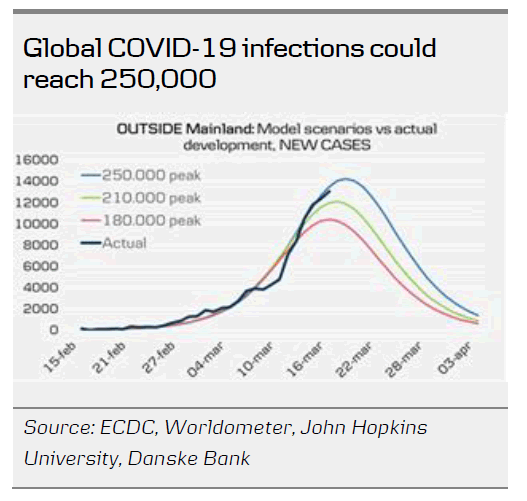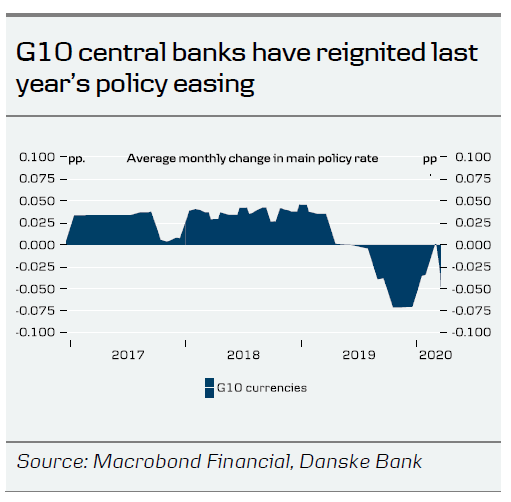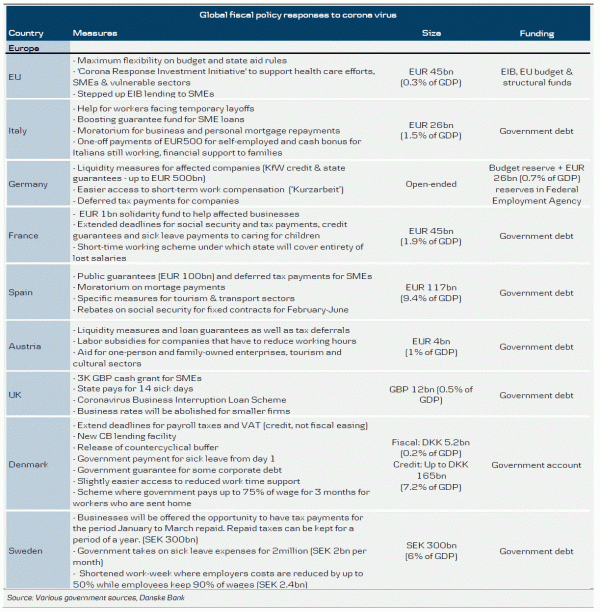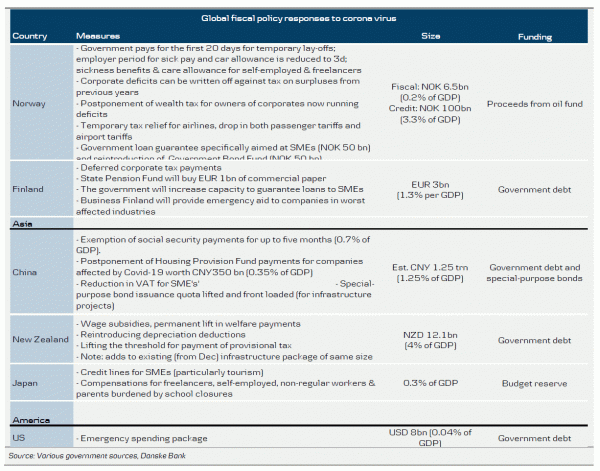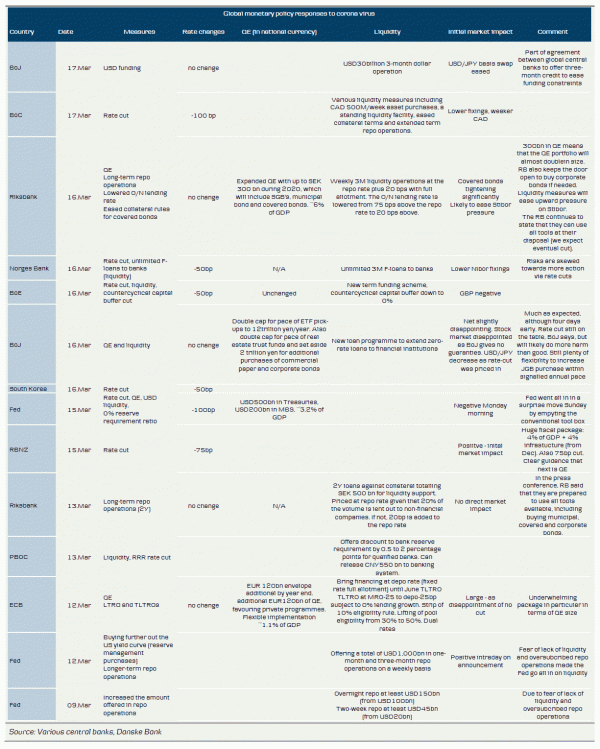Other reading
- Coronavirus COVID-19 Update
- The corona crisis – A global recession but not for long
- Italy’s corona crisis: Implications for the Italian economy, BTPs and Europe
This note contains an overview of the fiscal and monetary policy responses over the past couple of months in response to the spread of COVID-19. We intend to update this report regularly as and when major policy responses are announced.
- Apart from increased restrictions on the movement of people, global fiscal policy responses have focused on three areas: (1) increased healthcare spending targeting the containment and treatment of COVID-19, (2) liquidity measures targeting companies facing severe disruption and liquidity shortages, especially SMEs, and (3) support for affected workers to avoid employment and income losses.
- As part of their liquidity support for firms, many countries have announced tax deferral and public guarantee programmes to ensure the availability of funding. Labour market measures have focused on subsidy schemes that compensate consumers for income losses due to reduced working hours or temporary layoffs, as well as extension of sick pay and unemployment benefits and deferral of income tax payments.
- The size of the fiscal packages differs significantly across countries. However, many countries have announced packages amounting to at least 1% of GDP, while other countries have taken an ‘open-ended’ approach, where the size of the fiscal boost will directly depend on companies/consumers’ take-up of the provided funds.
- According to EU finance ministers, liquidity and fiscal measures amounting to 10% and 1% of EU GDP, respectively, have already been pledged to support the EU economy (see table for details). In addition, automatic stabilisers such as unemployment benefit increases resulting from the drop in economic activity will give an additional boost of around 0.7% of GDP, according to our calculations. To compare, in 2009, Brussels and the EU states coordinated a EUR200bn (1.5% of EU GDP) fiscal spending package. While the package this time seems more modest, it is important to note that the spending will take place over a relatively short period of time (1-2 quarters), meaning the fiscal impact will be bigger than indicated in proportion to annual GDP.
- The EU Commission has already pledged budget rule flexibility to accommodate countries’ fiscal effort. A more active role by the ESM in the fight to alleviate the economic and financial repercussions from the coronavirus could be a next step, in our view (i.e. through precautionary credit lines or other, cheaper and more flexible emergency assistance lending schemes similar to the IMF’s rapid credit facility) – but currently discussions remain at an early stage.
- Global central banks have also stepped up their support. The central banks have mainly operated via interest rate cuts, QE and liquidity injections. Most notable has been the Fed’s response, as it has cut interest rates by 150bp and made additional QE purchases and liquidity provisions. Also, the G6 central banks have established a USD swap line.
- Central banks with less policy space or otherwise in an easing stance have also eased, albeit less through interest rates and more focused on cheap funding for banks and QE purchases.




